The San Francisco Earthquake
Gail Dusenbery and Jan Herman (1, 2); Claude Pélieu (Grey Editor, 2); Claude Pélieu and Jan Herman (3); Jan Herman (4); and Jan Herman and Norman O. Mustill (5)
San Francisco
Vol. 1, nos. 1–5 (Fall 1967–1969).
The San Francisco Earthquake, vol. 1, no. 1 (Fall 1967). Cover collage by Norman O. Mustill.
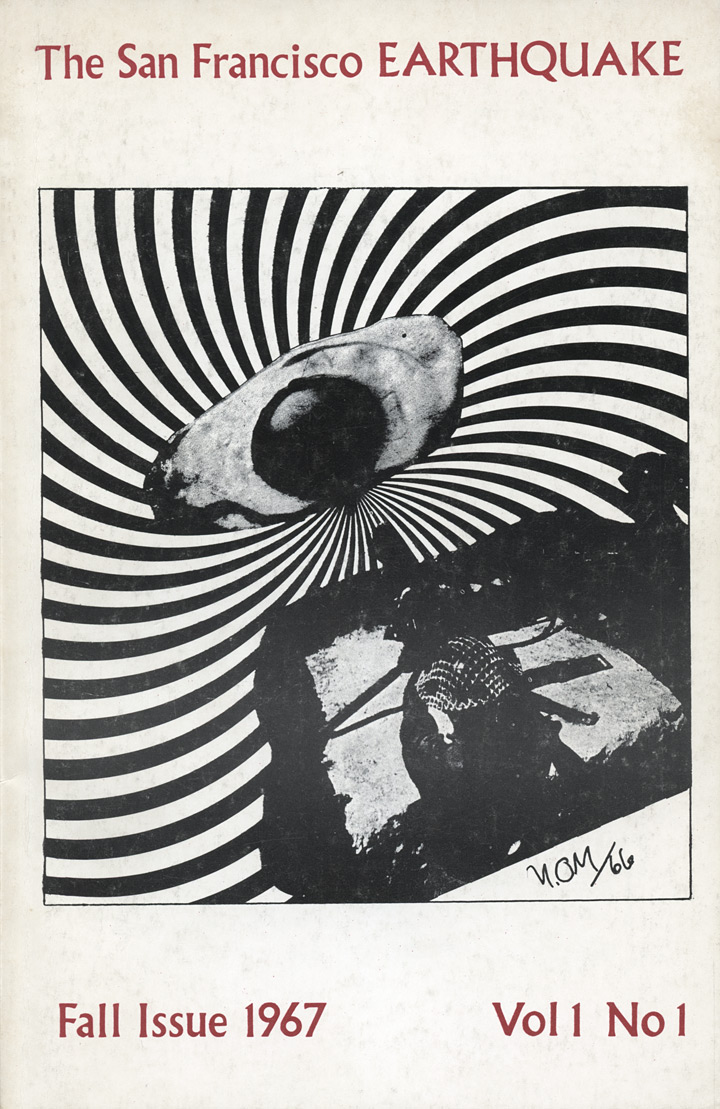
We should have named it Earthquake, plain and simple. But we were in love with San Francisco, with the city as it was then in the mid-1960s. It’s not for nothing that the first issue, published in the fall of 1967, began with a swooning LSD-flavored prose poem, “First Evening in San Francisco.” The poet was a New Yorker, though: Jim Brodey. The second poem, “I’m Hunger,” was by Debi Ray. He lived in India. The third piece was an anarchist manifesto, “Intro to Provo,” by Roel van Duyn. He was Dutch. Experimental texts by William S. Burroughs were the heart and soul of the magazine through the entire run of five issues. Burroughs lived in London.
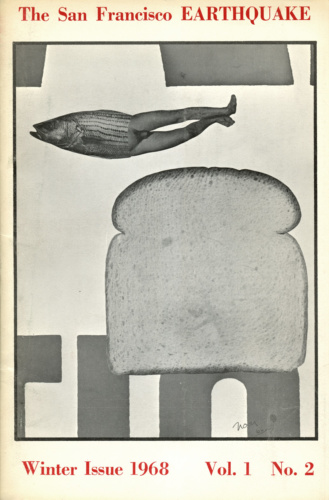
The San Francisco Earthquake, vol. 1, no. 2 (Winter 1968–69). Cover collage by Norman Mustill.
My chief collaborators were a German living in Heidelberg, Carl Weissner; a Frenchman who had recently moved to San Francisco, Claude Pélieu; an American expat who arrived with Claude after living for decades in Paris, Mary Beach; and a Canadian from Montreal who lived in Marin County: Norman O. Mustill. My other close associates were Nanos Valaoritis, who fled from Athens when the Greek military junta took over—he was living in Oakland—and Liam O’Gallagher, the one native Californian in the whole mishpucha, who lived in San Francisco’s Chinatown.
So it really would have been more accurate to call the magazine just plain Earthquake. But my original coeditor, Gail Dusenbery, a poet living in Berkeley, who chose the name for the magazine, decided that a photo of the city engulfed in flames during the 1906 earthquake belonged in that first issue. It was captioned “SAN FRANCISCO A BLAZING FURNACE.” Which more or less explains how the magazine got its full moniker.
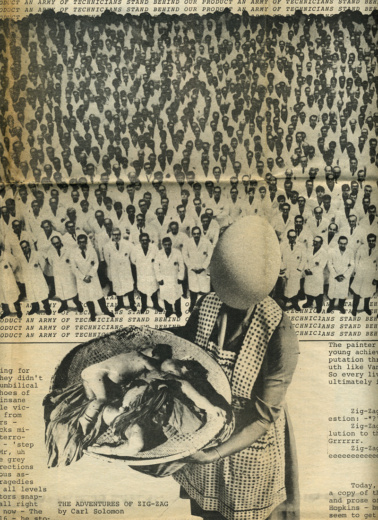
A close-up of one of the three unbound folded sheets, each 22½ x 30 inches, in the San Francisco Earthquake 5 (1969), the “VDRSVP issue.”
Admittedly, we published the usual suspects of the Bay Area lit scene (Ferlinghetti, Robert Duncan, Michael McClure, Charles Plymell); the not-so-usual (Stephen Schneck, Bob Kaufman, Herbert Huncke, Janine Pommy Vega, Bill Bathurst, Doug Palmer, Clemens Starck); but many more from elsewhere (Alan Ansen, Frank O’Hara, Dick Higgins, Richard Kostelanetz, Allen Ginsberg, Carl Solomon, Sinclair Beiles, Douglas Blazek, Ed Sanders, Ken Weaver, Dennis Jasudowicz, Tom Veitch, Ron Padgett, Alain Jouffroy, Ken Friedman, John Furnival, Ed Ruscha, Georges Bataille, Jean-Pierre Duprey, Christo, Jeff Nuttall, Harold Norse, Jean-Jacques Lebel, Jean-François Bory, Jochen Gerz, Wolf Vostell).
The roster of Beat, post-Beat, Fluxus, and otherwise-inclined contributors may have had something to do with the magazine’s wide recognition at the time. But it’s more likely the result of being included in the City Lights catalogue, which made the magazine available nationally and internationally. (I was Ferlinghetti’s assistant at the time.) Ironically, the best issue, the one that broke the most ground—the fifth and final issue, which consisted of three VDRSVP newsprint broadsheets folded within wraparound covers—never appeared in the catalogue. The broadsheets got the widest circulation, however, because they were reprinted by the New Orleans underground paper NOLA Express as literary inserts.
— Jan Herman, New York, March 2017

The San Francisco Earthquake, vol. 1, no. 3 (Spring 1968). Cover by Roy Lichtenstein.
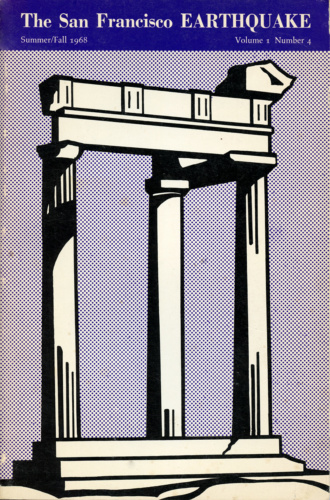
The San Francisco Earthquake, vol. 1, no. 4 (Summer/Fall 1968). Cover by Roy Lichtenstein.
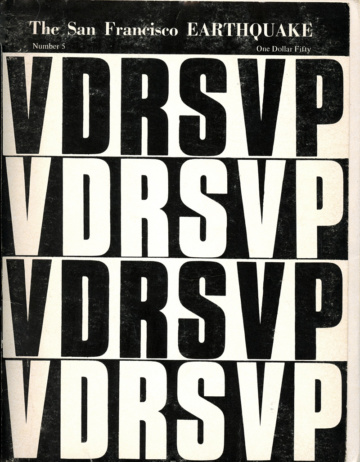
The San Francisco Earthquake 5 (1969).
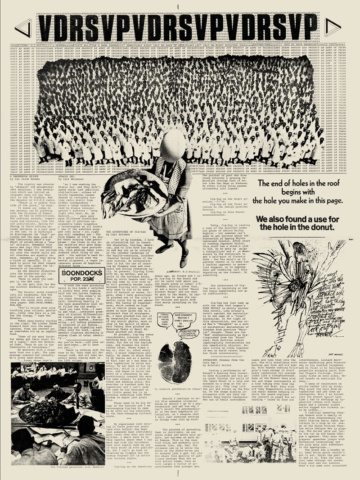
VDRSVP #3 contained in the San Francisco Earthquake 5 (1969).
